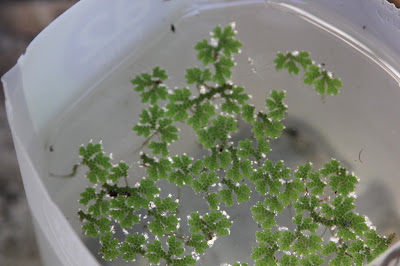 |
| Azolla starting to cover the water surface |
I have read no evidence of azolla reducing the survival of immature mosquito larvae of any of the species of mosquitoes that are common in Australia.
So how does azolla help to lower the numbers of mosquitoes?
I have read a few experiments which have tested the suffocation theory using some of the species of mosquito that are common in Australia as well as one of the species of azolla that is common in Australia. None of the studies I have read indicated that larvae respiration was hindered by azolla in any way. All the studies I have read indicate that mosquito larvae either find a naturally occurring gap or simply push their breathing tube up between the azolla as if it wasn’t there. Poking a snorkel up through azolla also protects them from being seen by predators! Never listen to anyone who says that mosquitoes are suffocated by azolla, they have not done any research and are talking nonsense.
Having a few azolla plants floating here and there with mostly open water does nothing to control mosquitoes.
Now that the ways in which azolla does not control mosquitoes is out of the way let’s look at how azolla can and does help to control mosquito populations.





